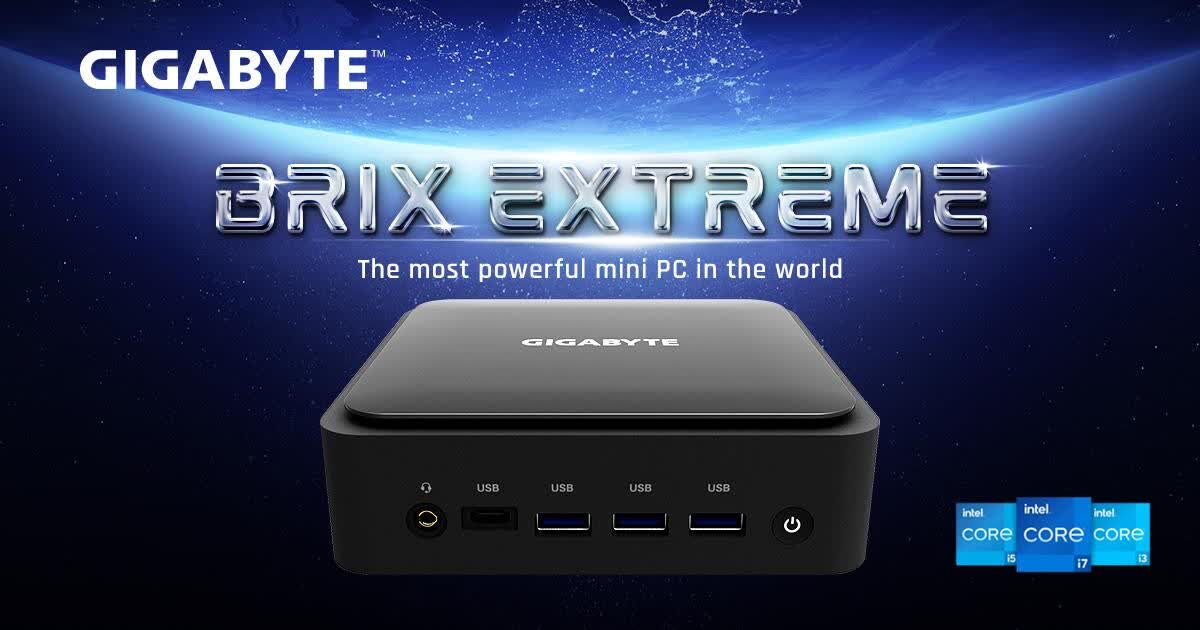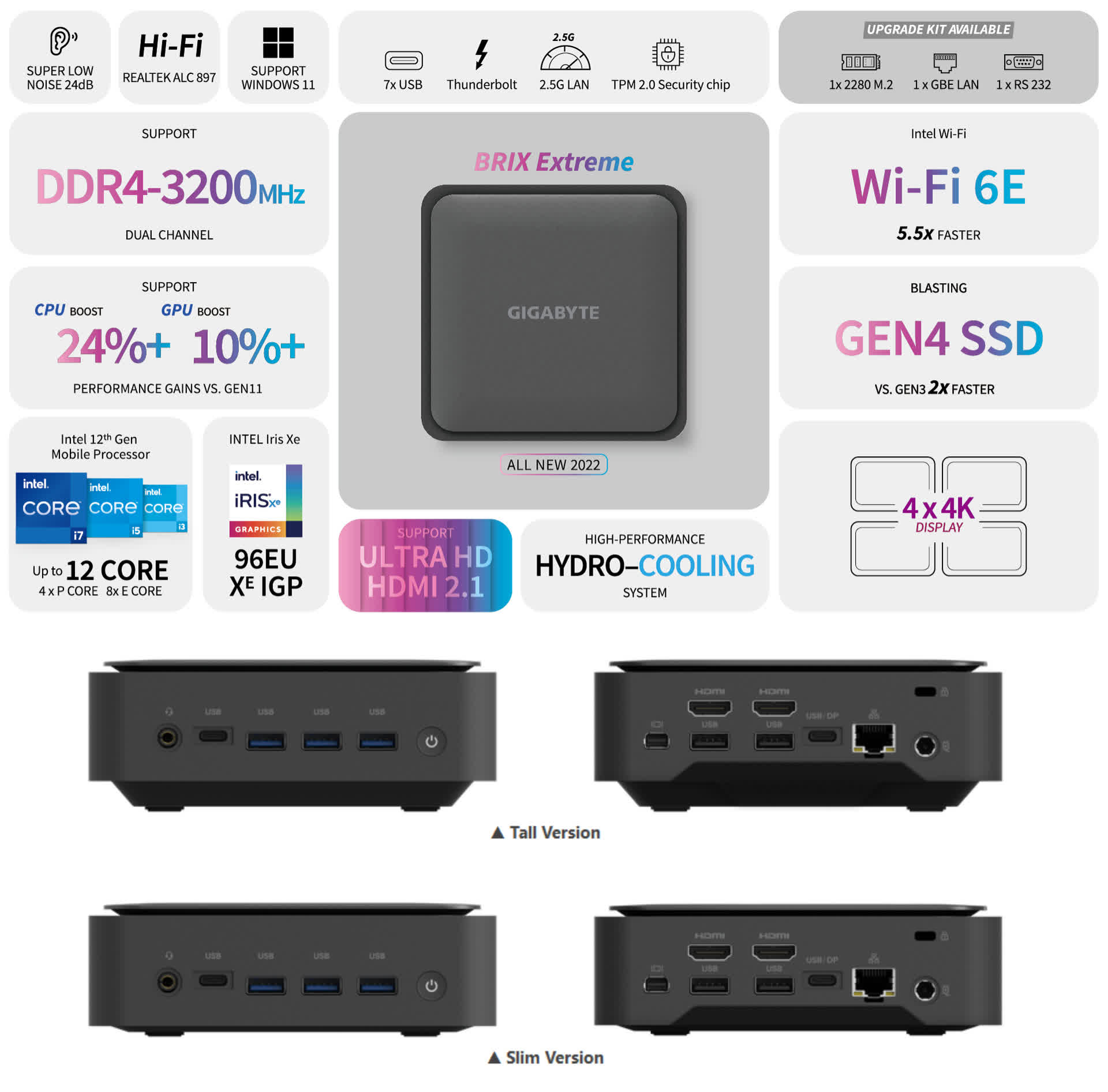In a nutshell: Gigabyte says the new Brix Extreme mini PC is the most powerful of its kind in the world, a bold claim in the face of Apple's recently released mini but mighty Mac Studio. However, as a Windows PC, the Brix Extreme seems to pack quite a punch, given that it's running Intel's latest mobile silicon and is fairly loaded in terms of connectivity.

Arriving in Q2 this year for a TBD price, Gigabyte's new Brix Extreme is poised to offer lots of computing power in a compact (44 x 134 x 139 mm) footprint. This mini PC is also designed to be quiet, which according to Gigabyte's internal testing, was able to keep noise levels under 30dB while under load and peaked at 35dB with the CPU boost mode enabled.
Underneath sits Intel's 12th-gen Core mobile processors, starting from a 6C/8T i3 all the way up to a 12C/16T i7 chip. Although no RAM capacity is specified, the mini PC will support DDR4 dual-channel 3200MHz memory. A discrete GPU option is absent (unsurprisingly), but Gigabyte does note a 10 percent increase in performance of Intel's Iris Xe graphics over prior models.

Moreover, the Brix Extreme is able to connect with up to four 4K@60Hz displays and can output at 8K resolution, thanks to HDMI 2.1. Buyers will be able to add an extra 2.5" SSD/HDD if they go for the taller variant, and Gigabyte will also sell an upgrade kit that adds an extra m.2 2280 slot, a LAN port - in addition to the mini PC's 2.5G Ethernet and Wi-Fi 6E connection - and an RS232 port.
To get it out of sight, the Brix Extreme will be bundled with a VESA bracket for mounting on the back of a monitor. There's no word yet on what this mini PC will cost, but expect to pay a pretty penny when it becomes available later this year.
https://www.techspot.com/news/93909-gigabyte-launches-most-powerful-mini-pc-world-brix.html